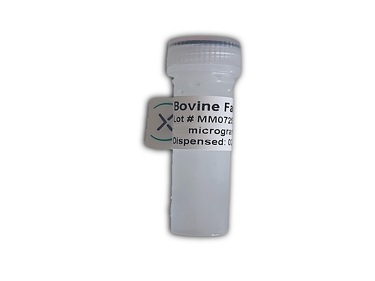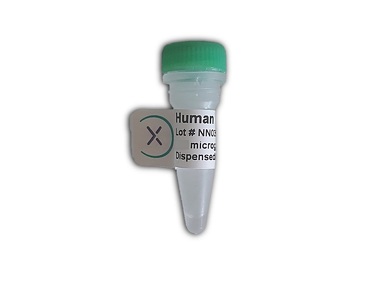Bovine Activated Protein C (APC)
| 9-BCAPC-1080 | Vial | 50 µg |
| 9-BCAPC-1080-1 | Vial | 1 mg |
2-chain structure : MW 35 000 and 21 000 Da, Gla domain in N-terminal and 2 EGF domains
Formulation 50/50 (v/v) glycerol/H₂O
Description of the Bovine Activated Protein C (APC)
6.0 to 18.5 units/mg
MW(Da) : 52 650
Extinction coef. : 13.7
Determination of activity by chromogenic test
Isoelectric point : 4.2-4.5
Advantages
The vast majority of enzymes is pure (without additives) with > 95% purity SDS-PAGE.
Expiration date of one year from delivery.
Delivery in large quantities.
Discount according to quantities.
Informations
An enzyme is a protein that catalyzes a biochemical reaction. It converts a substrate into a product. Each enzyme has a structure adapted to its function and its activity is dependent on an optimum temperature and pH. Protein C is a 62 kDa glycoprotein, synthesized by the liver in the presence of vitamin K. PC is at the center of a physiological system that inhibits coagulation : the anticoagulant system of protein C. Thrombin associated with thrombomodulin loses its procoagulant properties at the same time as it activates PC to active protein C (PCa). PCa in the presence of protein S, calcium and phospholipids is capable of cleaving FVa and FVIIIa blocking the amplification loop of thrombin generation.
















